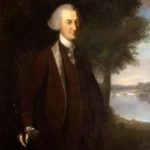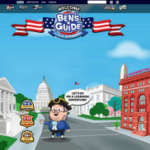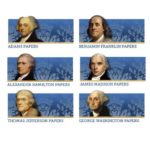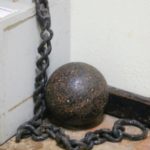Students who listen to this Grade 2 Core Knowledge History and Geography unit discover that Americans had a difficult task at hand after winning the Revolutionary War: they had to figure out a better way to govern themselves. Such leaders as James Madison, George Washington, Alexander Hamilton, and Benjamin Franklin traveled to Philadelphia to meet at the Constitutional Convention, with the goal of creating a new government. Students learn that the talks were held in secret in Independence Hall and that American leaders argued about many issues until they agreed to approve a new Constitution. They then hear that James Madison (whom we call the Father of the Constitution), along with John Jay and Alexander Hamilton, wrote the Federalist Papers to explain the document’s merits and to persuade the states to vote for it. Students find out that the states did finally approve the Constitution; that Madison wrote a Bill of Rights that was added to it; that the Constitution gives the American people the right to decide what the laws should be for our country; and that we can still amend it today.(5 lessons)
Famous Founders

This short video expands the definition of “famous Founder.” Men like George Washington, Thomas Jefferson, Benjamin Franklin, and James Madison are readily considered to be famous. However, Professor Daniel Dreisbach suggests that individuals such as Roger Sherman, John Dickinson, John Witherspoon, and Elbridge Gerry are equally deserving of fame and honor for their contributions during our nation’s founding era.
Ben’s Guide to the U.S. Government

Go on a learning adventure with Benjamin Franklin. Ben’s Guide is designed to inform students, parents, and educators about the workings of the Federal Government. Site content is divided into age levels. Lesson plans developed by the American Association of School Librarians are available, and games are also offered.
Founders Online

The website brings together the papers of six of the nation’s Founders (Washington, Adams, Jefferson, Madison, Franklin, and Hamilton) into one searchable database. The site has taken the content produced by teams of historians and documentary editors who have worked for many years to transcribe and annotate thousands of primary source documents from hundreds of sources and publish them. The website combines all these document transcriptions and annotations into one free online resource.
Documents and Debates in American History and Government – Vol. 1, 1493-1865
The Core Documents Collection – Documents and Debates is structured around a series of topics, each based on a question for debate. For each topic, there is a collection of documents that, together, form the basis of argument over that topic – from those who debated it at a given point in American history. Volume One covers 1493-1865, and Volume Two covers 1865-2009.
The goal is to explore a series of critical moments in American history by asking questions for which there are not simple yes/no answers, but instead call for informed discussion and rational debate. The Documents and Debates readers also include appendices of additional documents, and together are a perfect fit for any American History survey course, including AP U.S. History.
The Constitutional Convention: What the Founding Fathers Said

By examining records of the Constitutional Convention, such as James Madison’s extensive notes, students witness the unfolding drama of the Constitutional Convention and the contributions of those who have come to be known as the Founding Fathers: Madison, Benjamin Franklin, George Washington, and others who played major roles in founding a new nation. In this lesson, students will learn how the Founding Fathers debated, and then resolved, their differences as they drafted the U.S. Constitution.
